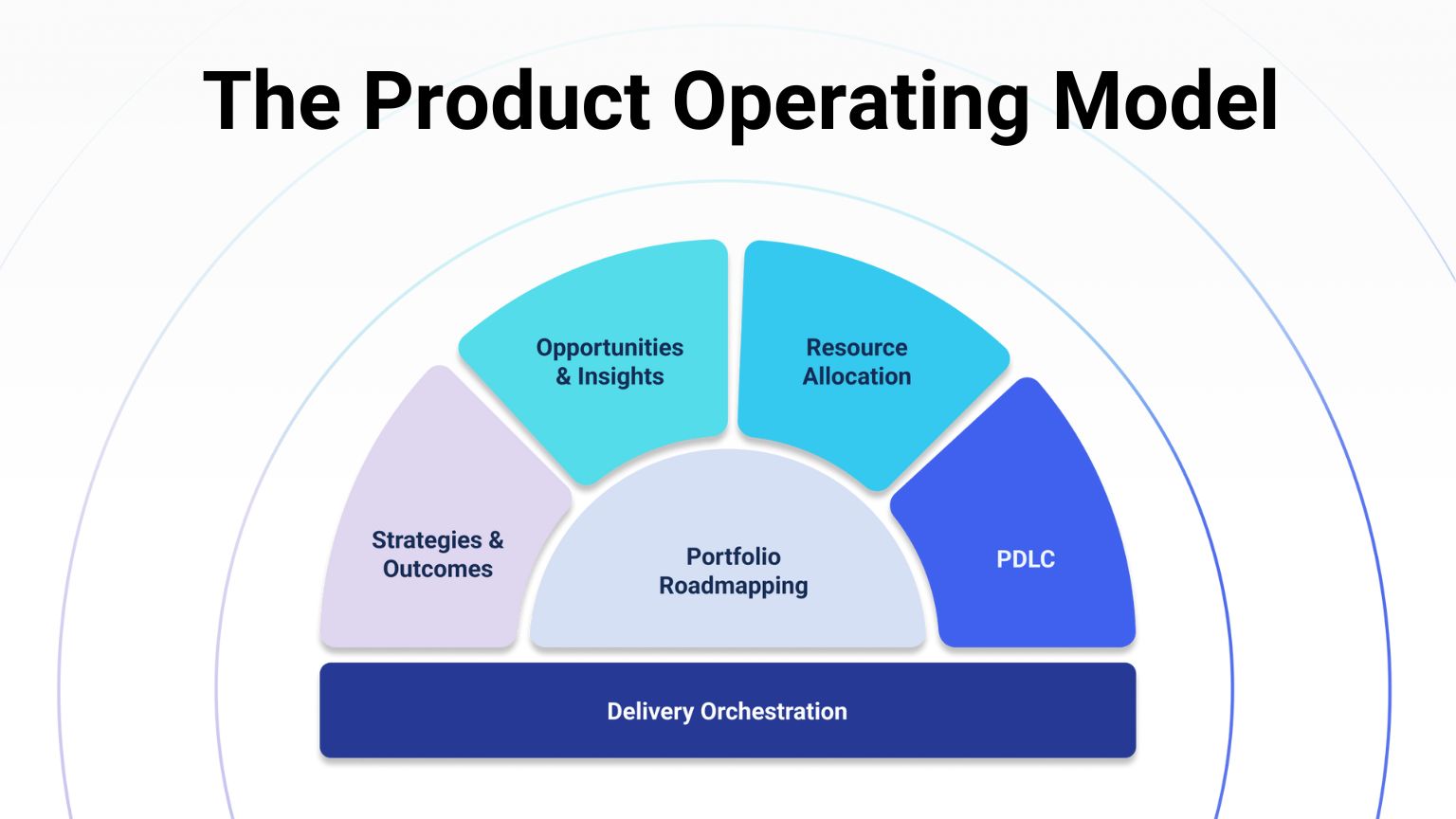Product Operating Model: The Backbone of Product Success
A product operating model (POM) is the foundational framework that drives the success of a product organization and, by extension, the broader company. For a Chief Product Officer (CPO), this model is crucial in aligning product strategy, teams, processes, and resources to achieve company-wide goals. It provides the structure through which all product-related decisions are made and ensures that the entire product organization operates efficiently and cohesively.
The operating model isn’t just a one-size-fits-all approach; it’s designed to reflect the unique needs, challenges, and goals of an organization. It integrates the core elements of the product lifecycle—strategy, design, development, and delivery—into a streamlined system that ensures products are not only developed on time and within budget but also aligned with overarching business objectives.

Why the Product Operating Model (POM) Matters
For CPOs and product leaders, a well-defined operating model is essential for driving product excellence. It lays out how teams interact, how decisions are made, and how resources are allocated across the product portfolio. Without this structure, product organizations can face inefficiencies, misalignment, and confusion, hindering the company’s ability to deliver on its strategic goals.
A clear and well-implemented operating model provides several key benefits:
- Alignment Across Teams: One of the primary challenges for product organizations is ensuring that cross-functional teams (product, engineering, marketing, sales, etc.) are working toward the same objectives. The product operating model fosters alignment by clearly defining roles, responsibilities, and communication channels between departments.
- Improved Efficiency: With the right processes and workflows in place, product teams can operate more efficiently. The model ensures that resources are used effectively, timelines are respected, and bottlenecks are identified and resolved quickly.
- Better Decision-Making: A solid framework helps CPOs and product leaders make smart, data-driven decisions. Clear rules for prioritization, governance, and risk management, guide teams toward the most impactful initiatives. This clarity helps leaders move forward with confidence.
- Scalability: As companies grow, so does the complexity of their product portfolios. A scalable product operating model ensures that the organization can adapt to changes in market conditions, customer demands, and business objectives without sacrificing product quality or speed.
Key Components of a POM
To create an effective model, CPOs need to consider several key components. These include:
- Strategy and Vision: A clear product vision and strategy should be the guiding light for the entire product organization. The model ensures that this vision is communicated effectively across all levels of the organization and that product teams are aligned with it.
- Processes and Workflows: The model should define how product development progresses from ideation to delivery. This includes defining key processes such as prioritization, roadmapping, and release management. Product teams should also be equipped with tools and methodologies (e.g., Agile, Lean) that support efficient and effective execution.
- Roles and Responsibilities: The model should outline the roles of key stakeholders, including CPOs, product managers, engineers, designers, and other cross-functional team members. Clear role definitions help avoid confusion and streamline decision-making.
- Resource Allocation: A key element of the operating model is determining how resources—time, budget, and talent—are allocated across products and initiatives. This ensures that high-priority projects receive the attention and support they require while minimizing waste or inefficiencies in resource distribution.
- Governance and Risk Management: Governance structures within the product operating model are essential for maintaining control and ensuring that product decisions align with broader business objectives. This includes establishing frameworks for managing risks, ensuring compliance, and monitoring progress.
Adapting the Product Operating Model to Organizational Needs
Every organization is unique, so the product operating model should match its specific goals, culture, and product maturity. Startups may require a more flexible and adaptive model. Larger enterprises may need a more structured, formal approach to managing complex product portfolios.
A successful product operating model isn’t static; it needs to evolve as the company grows and market dynamics shift. CPOs must continually assess the effectiveness of their operating models. They should make changes as customer needs, technology, and business goals evolve.
How the Product Operating Model Supports Company-Wide Success
The product operating model isn’t just about making the product organization more effective—it’s about driving overall company success. By optimizing how products are built, launched, and managed, it influences the company’s ability to execute on its strategic goals.
For CPOs, a clear product operating model ensures can innovate while staying focused on business priorities. It connects product decisions to company objectives, enabling teams to deliver products that create value for the business and its customers.
Learn How to Put Melissa Perri & Denise Tilles’ Product Operating Model Into Practice.
Conclusion
A strong product operating model (POM) is essential for any organization looking to streamline its product development efforts and achieve strategic business goals. For CPOs, this model gives the structure to manage complex product portfolios, align teams, and use resources wisely.
By creating a flexible, scalable, and well-defined operating model, product teams can navigate challenges, and improve how they work. This helps them deliver better products that contribute to the company’s success.